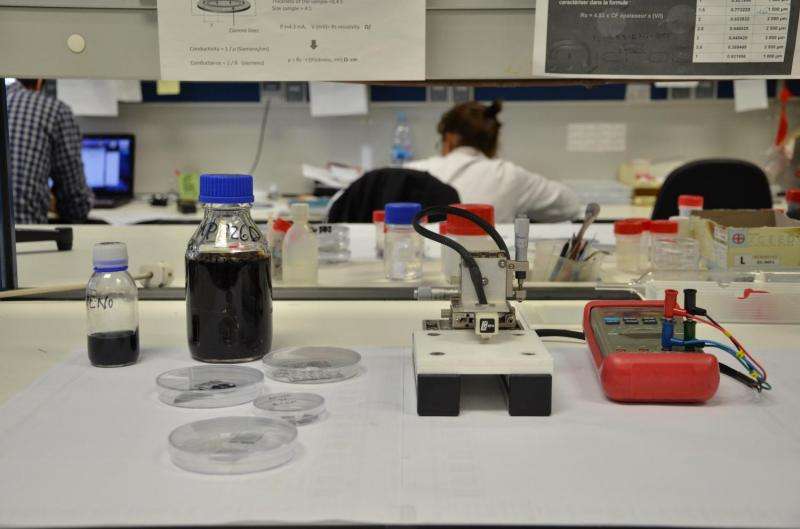New catalyst improves efficiency of drug and pesticide production

Scientists at the Universitat Politècnica de València (Polytechnic University of Valencia, UPV) and the University of Bucharest have developed a new catalyst material combining graphene with oriented metal nanoparticles for organic reactions in the manufacture of drugs and pesticides. Aside from the material itself, the main contribution lies in the single-step process by which it is obtained.
"Joining these two components [the graphene and the metal nanoparticles] while simultaneously getting the nanoparticles to orient themselves correctly is a big step, and has a direct impact on the efficiency and functionality of the resulting material as a catalyst. Compared to the soluble metal compounds currently in use, this new catalyst is between a hundred thousand and a million times more active", explains Hermenegildo García, researcher at the Instituto de Tecnología Química (Chemical Technology Institute), a joint research centre run by UPV and the Consejo Superior de Investigaciones Científicas (Science National Research Council, CSIC).
To understand the importance of the properties of this new material, Hermenegildo García offers an analogy for the single-step production process they have developed: it is like "being able to lay the streets and the buildings of a city in the correct layout all at the same time. The new material is conducive to the coupling reactions that give us the drug and pesticide compounds, allowing bonds to be made easily and efficiently." The reason for this lies in the optimal arrangement of the nano-sized particles.
The process for obtaining the graphene film with oriented nanoparticles begins with the purification of the raw material: seaweeds and shrimp shells. The natural biopolymers are then impregnated with metal ions and arranged like a film on a quartz surface, and the system is heated to high temperatures of around 1200 degrees. Under these conditions, the biopolymers are turned into graphene, while the metals generate the nanoparticles that are deposited on the graphene film.
"Continuing with the analogy from before, the graphene would be the streets, which are laid first, and then the metal nanoparticles or buildings are arranged on top of them in a process which encourages their optimal orientation. This is what makes the resulting material more efficient", concludes García.
The full results can be found in the international team's recent paper published in Nature Communications.
More information: Ana Primo et al. High catalytic activity of oriented 2.0.0 copper(I) oxide grown on graphene film, Nature Communications (2015). DOI: 10.1038/ncomms9561
Journal information: Nature Communications
Provided by Asociacion RUVID





















